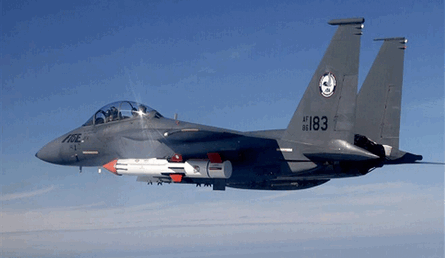Boeing is trying to secure funding from the US Defense Advanced Research Projects Agency to attempt a third flight of the HyFly hypersonic missile demonstrator after twice failing to hit the targeted Mach 6 cruise speed.
"We are in discussions with our customer about potentially doing a third HyFly flight," says Boeing advanced tactical missile systems director Carl Avila. "The failures that we had were not associated with the technology that we were actually developing under that programme."
During the 16 January second and final flight under Boeing's HyFly contract with DARPA, the missile's scramjet engine suffered a fuel pump failure and the vehicle plunged into the Pacific Ocean.
On the first flight, in September 2007, a software problem prevented the engine from being throttled up and the vehicle only reached Mach 3.5, says Avila. "We understood what happened and it was corrected. On the second launch we had a totally unrelated random part failure of the fuel pump," he adds.
In both tests the HyFly was launched from a Boeing F-15E and boosted by a rocket motor to beyond M3, where the dual-combustion ramjet was supposed to take over. The objective was to demonstrate a missile-like vehicle with a range of 740km (400nm) and a maximum cruise speed exceeding M6.
 |
|---|
© US DARPA |
"We were able to successfully prove that we could separate from the aircraft, boost to the desired Mach number, get the inlet covers off, and we did get the main engine started on the first flight, but we never throttled up because of a software issue," says Avila.
"During the time it was flying, our flight controls, navigation and guidance were doing everything they should do. We had a requirement to do a terminal manoeuvre simulating a weapon delivery, which was done on both flights. The only thing we didn't demonstrate was the sustained cruise velocity out of the flight motor, which is obviously a major part of what our goals were."
The HyFly's Aerojet-built dual-combustion ramjet pre-burns liquid hydrocarbon fuel in a subsonic-combustion ramjet to generate a fuel-rich gas that is then burned in the supersonic-combustion ramjet.
"We think we know what we need to do to make the system more robust to attempt a third flight," says Avila.
HyFly is a joint programme between DARPA and the Office of Naval Research.
Source: Flight International
















